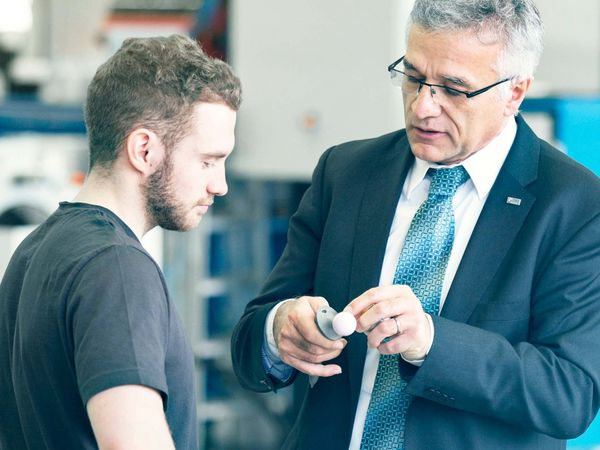Get more out of your grinding machine with creep-feed grinding technology
Creep-feed grinding was introduced in the 1970s by aerospace manufacturers researching methods to grind superalloy engine components. Creep-feed grinding delivers exceptionally high cutting depth without creating burrs or requiring constant replacement of cutting tools, yet is not inherently complicated - most production facilities will already be familiar with the basic principles of creep-feed grinding as it is similar to milling. And we at UNITED GRINDING support you in implementing this process to achieve excellent material removal rates that are possible with creep feed grinding.
The main difference between creep-feed grinding and milling is that a grinding wheel is used instead of a cutting tool. The results often speak for themselves: While traditional traverse grinding processes remove small amounts of material at feed rates of 5,000 mm/min, a single pass for creep-feed grinding falls in the range of 50-500 mm/min at cutting depths of 2.5 mm to 40 mm or more.
The growing application range for the process extends from grinding of gear racks for vehicle steering, saw blades and electric hair clipper parts to solid rollers for corrugated cardboard production, ceramic heart valve components and tiny pins used in engine management systems. Furthermore, creep-feed grinding can eliminate the need for typical secondary operations, which would increase the cost per part and lengthen production times.
Realistically, creep-feed grinding can be conceived as milling on steroids. This is because challenges such as long cycle times, burr formation or tool wear are minimized or eliminated in creep-feed grinding.
Obviously, suitable grinding machines and tools are required to achieve these excellent material removal rates. UNITED GRINDING has these grinding machines and the necessary expertise to help you make the most out of this technology for your parts production.











